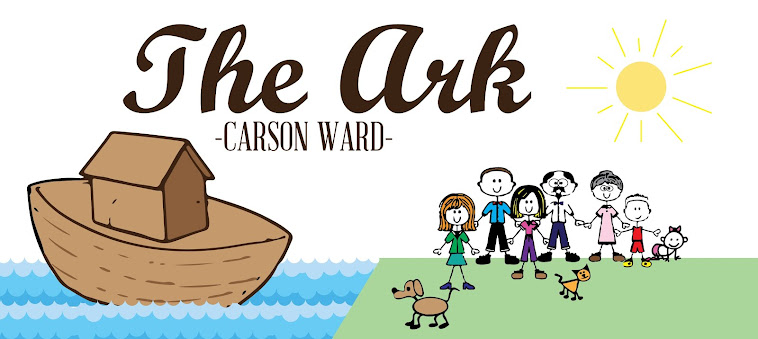The Church of Jesus Christ of Latter-day Saints
187th Annual General Conference
Saturday, April 1st, 9:00am (PST), 1:00pm (PST)
Saturday, April 1st, Priesthood Session, 5:00pm (PST)
Sunday, April 2nd, 9:00am (PST), 1:00pm (PST)
The BYU TV channel or on your computer at lds.org
Come listen to a Prophets voice, his Apostles and
General Authorities
Be filled with the Spirit, receive answers to your prayers and become spiritually prepared.
It took Noah almost 100 years to
build the ark . . .
According to Genesis 5 and 6 it took Noah almost 100 years to build the ark. In Genesis 41-43 we read about Pharaoh's Dream and Joseph. They prepared for 7 years. Many mocked Noah and Joseph for preparing something the people could not vision or imagine. The skies were blue, everything was great. Then the rain and flood came. Then the 7 years of drought and hunger came. Our church (The Church of Jesus Christ of Latter-day Saints) have admonished its members for years and years to be prepared with extra food, water, emergency supplies, to get out of debt and have a rainy-day savings. Our local and federal governments also admonish us to prepare. Do we allow others to mock us or say we are foolish for preparing for something we cannot see in the future or may never happen?
I would rather be prepared and not need it than need it and not be prepared! Imagine if there was a disaster or you lost your job or your health deteriorated where you could not work, your children said they are hunger and you have no food to feed them or money to purchase the food because you did not prepare. How would you feel? There are many reasons we might need our emergency food storage and emergency supplies. It takes time to build your ark, or your emergency preparedness food and supplies. Why not start right now, no more procrastination?
This blog is meant to help you become better prepared for such events in your life, in your family's life. Be better prepared!
New April Monthly Assignments
Emergency Preparedness . . .
72 Hour Individual Emergency Preparedness
Backpack . . . The Hygiene Kit
Updates . . .
Backpacks: Several people have asked me where I got my backpack from. I found that the ones from emergencyessentials.com are really good. They have 3 different size, small, medium and large. I purchased the medium size one. It is great and has enough room for your 3 kits (food kit, hygiene kit and stressor kit), extra clothing and other needed items I will list after we complete the 3 kits. There backpacks are now black. Click here to see them.
Food kits: When you purchase the food items make sure they have a least a year before they expire. Be careful in purchasing any of the food items from a discount store like the 99 Cent Store or Dollar General. Many times the expiration dates are in just a few days, weeks or months. If you store your backpack in your car the food needs to be rotated every 6 months due to the heat. In your home or at work in your office, every year.
The Hygiene Kit . . .
The past 3 months we have been working on the Food Kit. If you have not started or missed any of the assignments go back to January 2017 and follow through to March. Now we will start the Hygiene Kits. You will need to adjust some of the items according to age and needs. This is just a suggestion.
Why a Hygiene Kit? When you are in an emergency or disaster situation it is good to have things that will help you feel better, like being able to wash your hair, hand lotion for your dry hands and skin, etc.
Each month I will give you a weekly assignment until we have finished the hygiene kit, just like the food kit. You can purchase most of these items at a discount store like the 99 Cent Store or Dollar General or on the discount shelves in stores like Target and pharmacies like CVS, etc.
Instructions: You will need one item for each house hold member's hygiene kit. Remember to adjust according to ages. Place all these items in a large zip lock bag, write Hygiene Kit and their name on the bag. Place in their 72 Hour Individual Emergency Preparedness Backpack. Each time you purchase an item for the hygiene kit add it to the zip lock plastic bag.
For April add the following . . .
1st Week: Water-less Shampoo--Small bottle. You will want to have water-less shampoo so you do not use your valuable drinking water to wash your hair. In a disaster or emergency situation having clean hair will make the situation more tolerable per a woman who went through something like this. When someone in my family has been in the hospital I save the water-less shampoo they give them for my 72 Hygiene Kit. You can also purchase this at places like Target, CVS, Rite-Aid, etc. About $5.00.
2nd Week: Tooth Paste--Small tube, age appropriate and their favorite kind. Take out of the box and place in a small zip lock bag to avoid leakage.
4th Week: Small Comb or Brush
Here is the complete list if you want to complete your 72 Hour Individual Hygiene Kit now.
1. water-less shampoo
2. tooth paste, small tube, age appropriate
3. tooth brush, age appropriate
4. small comb or brush
5. small bar of soap in a small baggie or small bottle of liquid soap with a small wash cloth
6. small bottle of hand lotion
7. hand sanitizer
8. heavy work gloves
9. deodorant (only for those that need it)
10. small container of baby wipes (found this at the 99 Cent Store)
11. respirator masks
12. roll of toilet paper
13. feminine hygiene items or diapers for the baby
14. medical gloves, several pair
15. prescription medications and/or vitamins in a weekly pill box
16. sun screen
2. tooth paste, small tube, age appropriate
3. tooth brush, age appropriate
4. small comb or brush
5. small bar of soap in a small baggie or small bottle of liquid soap with a small wash cloth
6. small bottle of hand lotion
7. hand sanitizer
8. heavy work gloves
9. deodorant (only for those that need it)
10. small container of baby wipes (found this at the 99 Cent Store)
11. respirator masks
12. roll of toilet paper
13. feminine hygiene items or diapers for the baby
14. medical gloves, several pair
15. prescription medications and/or vitamins in a weekly pill box
16. sun screen
Optional:
1. 2-3 disposable shavers, for men
2. basic makeup, for women, good to feel pretty
Emergency Preparedness Ideas
13 Ways a Sun/Solar Oven Saves You Money While Being Prepared . . .

Check our this great video on different ways your can use your sun/solar oven. Did you know you can cook a turkey in it, did you know your can dehydrate fruits and vegetables with it? Click here to watch the video (1 hour and 15 minutes, but well worth the watch)
Some great ideas and information from the Emergency Essentials Blog . . .
13 Ways a Sun/Solar Oven Saves You Money While Being Prepared . . .

Check our this great video on different ways your can use your sun/solar oven. Did you know you can cook a turkey in it, did you know your can dehydrate fruits and vegetables with it? Click here to watch the video (1 hour and 15 minutes, but well worth the watch)
Some great ideas and information from the Emergency Essentials Blog . . .
The Emergency Essentials Blog has many more great ideas and tips on emergency preparedness and food storage, check them out here.
Great things to know . . .
How many of us have important documents to shred and chemical waste to dispose?
For those in the South Bay area--
The Shredding Place
1926 Del Amo Blvd.
Torrance, CA 90501
310-212-5266
Call ahead for an appointment, 9am-5pm. Up to 60 pounds $15. Watch as they shred your documents. They also take care of hard drives and other electronic devices for a fee.
Hazardous Waste Disposal Services
1400 N. Gaffey St.
San Pedro, CA 90731
800-988-6942
Saturday and Sundays only, 9am-3pm
Old paints, car fluids (oils, anti-freeze etc,), electronic equipment, no refrigerators, stoves, or appliances. Call to see what they will take. Do not get out of your car, they will remove everything. Free. Limited electronics.
Check your local areas for these types of disposal places.
Comments and Questions: Please share you comments or questions below or email me at theark.carsonward@gmail.com. Thank you for your comments and questions.
Next positing April 30th
























